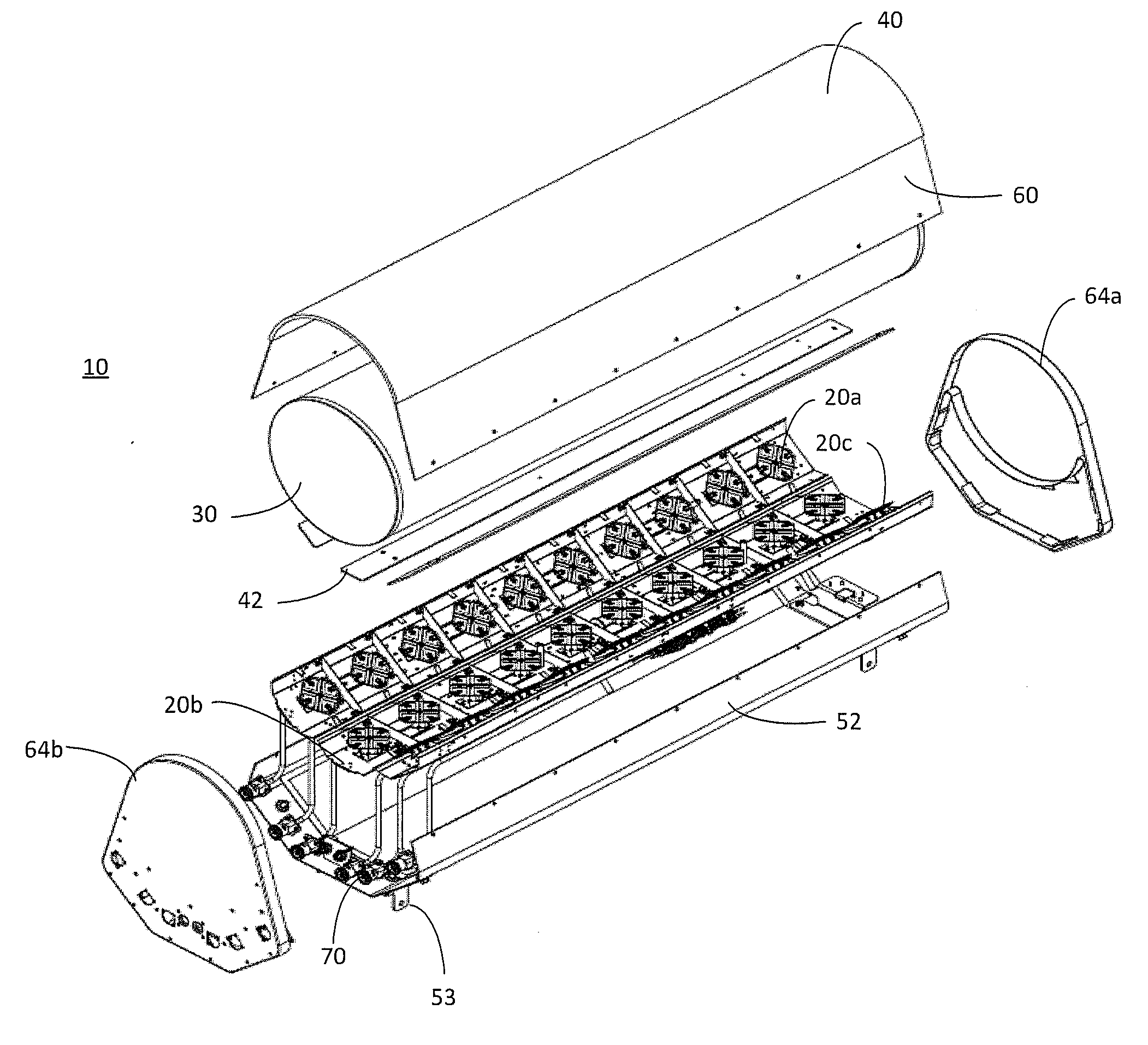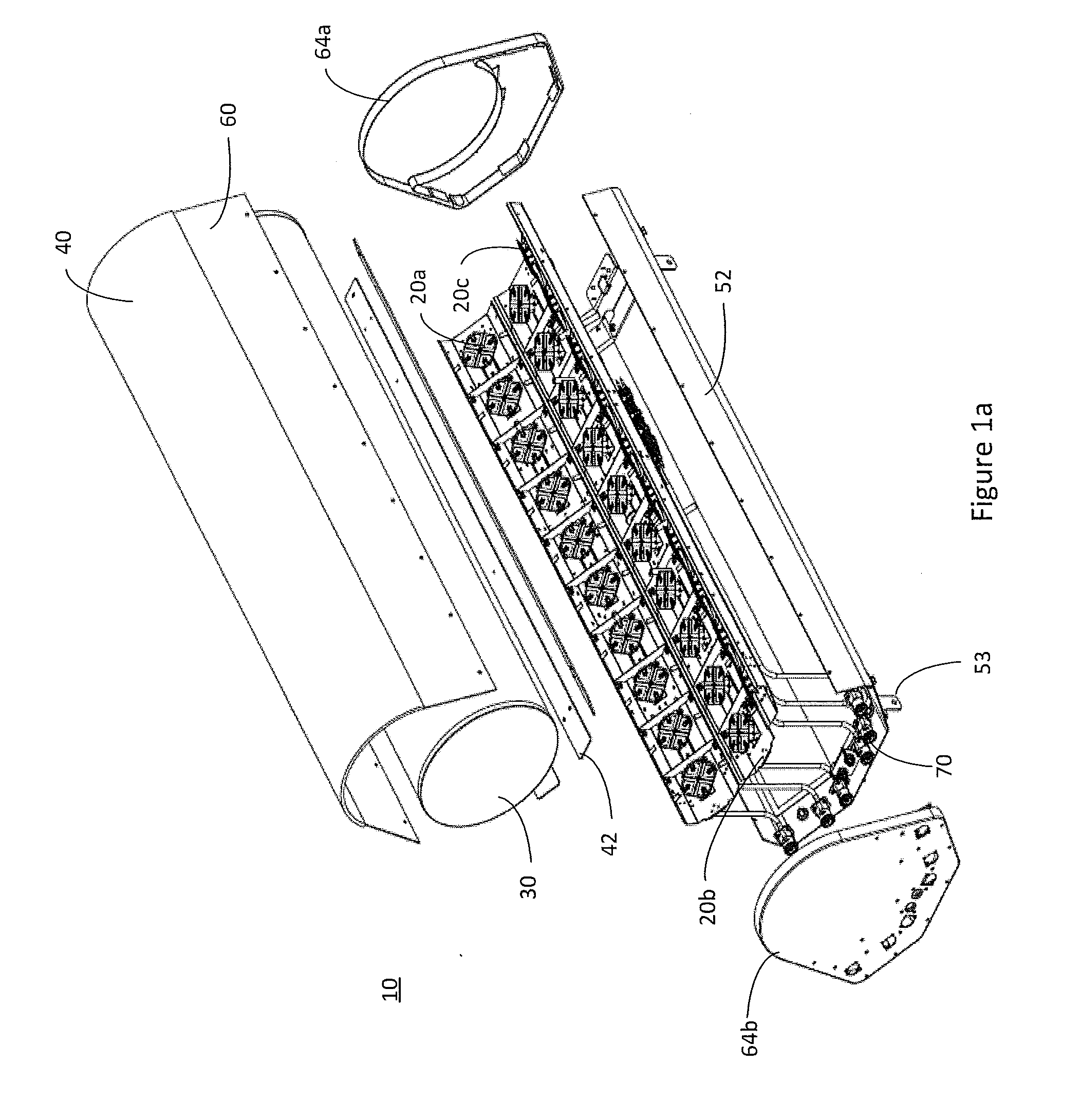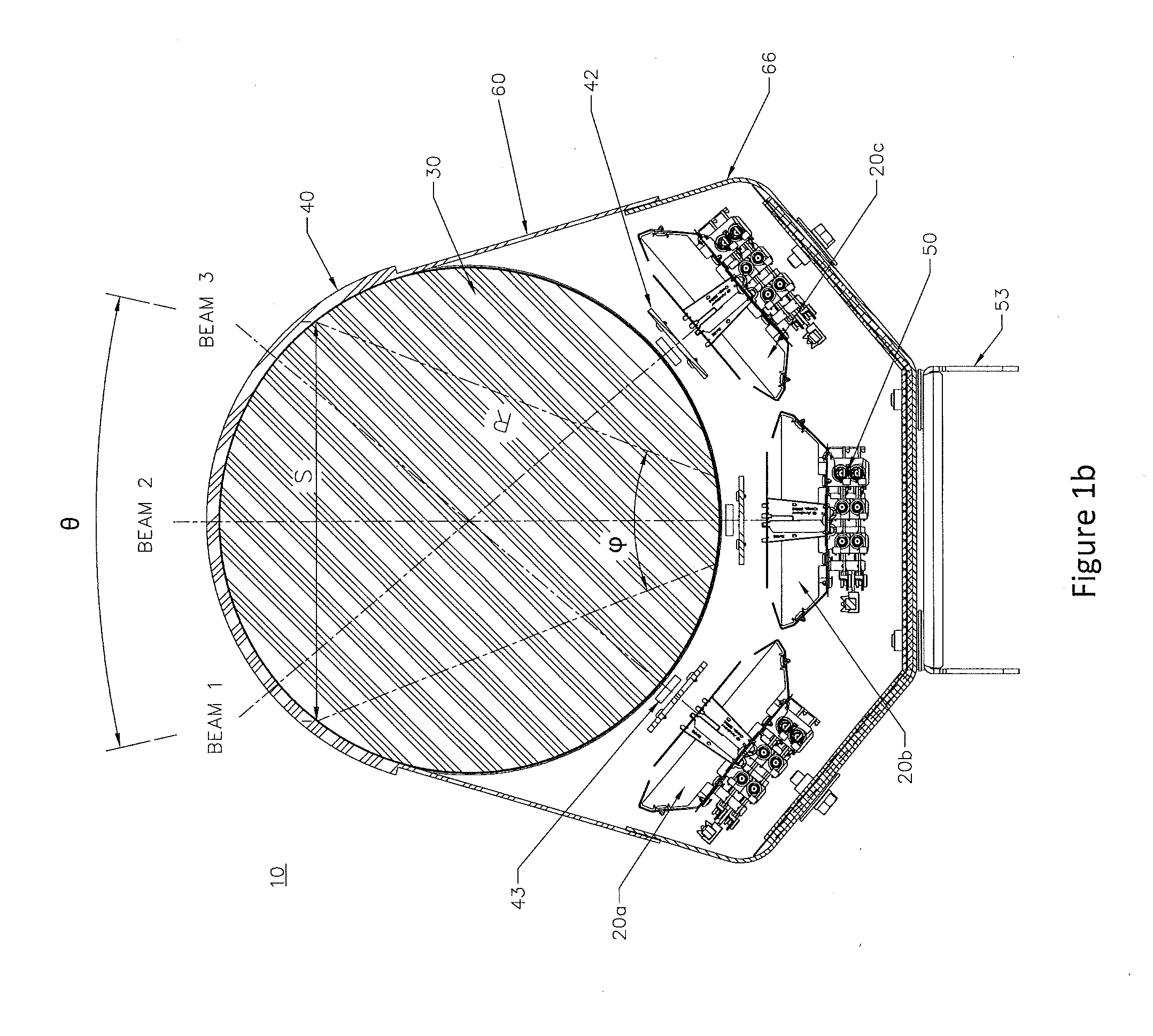Lensed Base Station Antennas
a base station and antenna technology, applied in the field of radio communication, can solve the problems of increased cost and space requirements, drawbacks of dividing a coverage area into smaller sectors, non-symmetrical beams, etc., and achieve the effect of improving the port-to-port isolation of multi-beam antennas
- Summary
- Abstract
- Description
- Claims
- Application Information
AI Technical Summary
Benefits of technology
Problems solved by technology
Method used
Image
Examples
Embodiment Construction
[0045]Referring to the drawings, and initially to FIG. 1a, 1b, an exploded view of one embodiment of a multi-beam base station antenna system 10 is shown in FIG. 1a, and its cross-section is shown in FIG. 1b. In its simplest form, the multi-beam base station antenna system 10 includes one or more linear arrays of radiating elements 20a, 20b, and 20c (also referred to as “antenna arrays” or “arrays” herein) and a radio frequency lens 30. Arrays 20 may have approximately the same length with lens 30. The multi-beam base station antenna system 10 may also include a first compensator 40, a second compensator 42, a secondary lens 43 (shown in FIG. 1b), a reflector 52, radome 60, end caps 64a and 64b, absorber 66 and ports (RF connectors) 70. In description below, azimuth plane is orthogonal to axis of radio frequency lens 30, and elevation plane is in parallel to axis of lens 30.
[0046]In the embodiment shown in FIG. 1a, 1b, the radio frequency lens 30 focuses azimuth beams of arrays 20a,...
PUM
 Login to View More
Login to View More Abstract
Description
Claims
Application Information
 Login to View More
Login to View More - R&D
- Intellectual Property
- Life Sciences
- Materials
- Tech Scout
- Unparalleled Data Quality
- Higher Quality Content
- 60% Fewer Hallucinations
Browse by: Latest US Patents, China's latest patents, Technical Efficacy Thesaurus, Application Domain, Technology Topic, Popular Technical Reports.
© 2025 PatSnap. All rights reserved.Legal|Privacy policy|Modern Slavery Act Transparency Statement|Sitemap|About US| Contact US: help@patsnap.com



